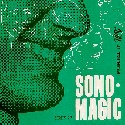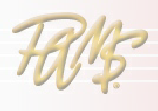© 2014-

The 1912 London International Radiotelegraphic Convention refined an idea adopted at the the 1906 Berlin International Wireless Telegraph Convention where it was agreed that coastal and ship stations were to have unique call signs formed from a group of three letters by assigning each country its own range of “call letters” to identify its broadcast stations.
When the commercial and entertainment possibilities of radio began to be explored (America’s first commercial radio station signed on in 1920, and by 1923 there were over 500 licensed stations) it was clear that there was going to be a need for more call letter combinations, so the government switched to granting call signs with four letters rather than three.
The broadcasting industry grew rapidly -
Although most of the effort was devoted to singing the virtues of products, a few stations began airing jingles to promote themselves. This became increasingly important as more and more stations took to the air, and the jumble of call letters that a listener was exposed to began to rise.
The value of a station’s commercial time was (and is) gauged by its audience ratings and in order for the ratings to be high, listeners must know and remember which station they heard so they can report it accurately in a survey. The memorable jingles helped listeners recall which station they had listened to. Jingles also added more production value to a station’s sound, enabled them to bridge awkward transitions and fill time if a programme ended too early.
The hub of the jingle industry was Dallas, Texas and a company called PAMS - taff musician (saxophone player) at KLIF Dallas.
taff musician (saxophone player) at KLIF Dallas.
In addition Bill also sold commercial time to the shows’ sponsors and he participated in creating commercials and jingles for those sponsors, as well as making musical identifications for the station itself.
They got a favourable reaction, and KLIF did well. After a while, some of Bill’s clients urged him to devote more time to working on their advertising needs. So in 1951 Bill Meeks formed his own advertising agency -
PAMS designed a group of ten jingles, and called the package simply "Series 1". A more elaborate "Series 2" followed shortly after. The idea was that stations would hear a demonstration tape of the jingles, and re-
Although PAMS produced hundreds of musical jingles for commercial sponsors and advertising agencies, station identification jingles quickly became the firm’s specialty. What began as a decision in 1906 to issue unique call signs to stations, eventually grew into a multi-


and station IDs




Floor 2
Back to




Listen to these PAMS jingles -
Series 18 -
This was the first jingle package to utilize the Sonovox, a device which can make any sound source seem to be speaking or singing. It was a PAMS exclusive.

Series 22 -
Designed as a follow-

Bill Meeks
Photo: PAMS



Trella Hart
Hart
One of the most unique and memorable solo voices to ever appear on PAMS jingles belongs to singer Trella Hart.
She was featured on "Swiszle" (Series 32) in 1966, "Fun Vibrations" (Series 33) in 1967, and a number of custom packages too.
Photo: PAMS
Thanks to PAMS and Jam Creative Productions for information used in this feature

and station IDs

